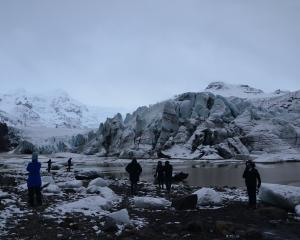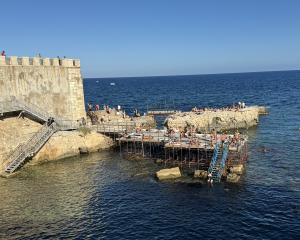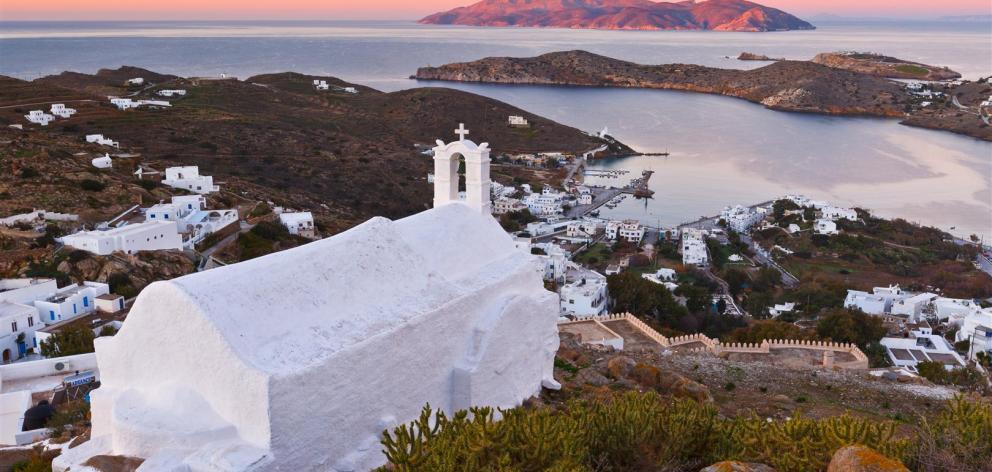
The coast is punctuated by empty beaches of golden sand and, above, hillsides of rock and scrub are sprinkled with purple vegetation. There is nothing else for miles around, except a tiny white Cycladic church, its mushroom-cap dome peeping from the landscape. The Greek island of Ios, tucked between heaving holiday hot spots Santorini and Naxos, is known as a teen and

The short way is to fly to Santorini then cross by ferry to Ios. For the more adventurous, there is the option of boarding the Eurostar to Paris, followed by a TGV to Italy, and then an overnight ferry to Athens, which takes 48 hours but offers the benefit of some impressive scenery along the way. Then it’s a four- to six-hour ferry ride from Athens, or you can break this up with some island hopping in between.
On a hilltop at the island’s northern tip, I stand in a little stone enclosure in front of a simple marble tombstone carved with a bearded head of Homer. Ios has been associated with Greece’s most famous poet since classical times. It is said to have been his mother’s home, and the place where he died and was buried. Ios isn’t the only claimant, but whether Homer came here or not, this is a spectacular spot with a full-circle pristine panorama — a perfect place for a peaceful (bring your own) aperitif or an island hike.
At the other end of the island, however, sunset during the summer season is another story. There, you’re likely to find bikini-clad teens dancing precariously on tables to a thudding bass and splashing happily into the swimming pool at Pathos Sunset Lounge, a bar, restaurant and club near Chora, the island’s main town, which stretches up the hillside.
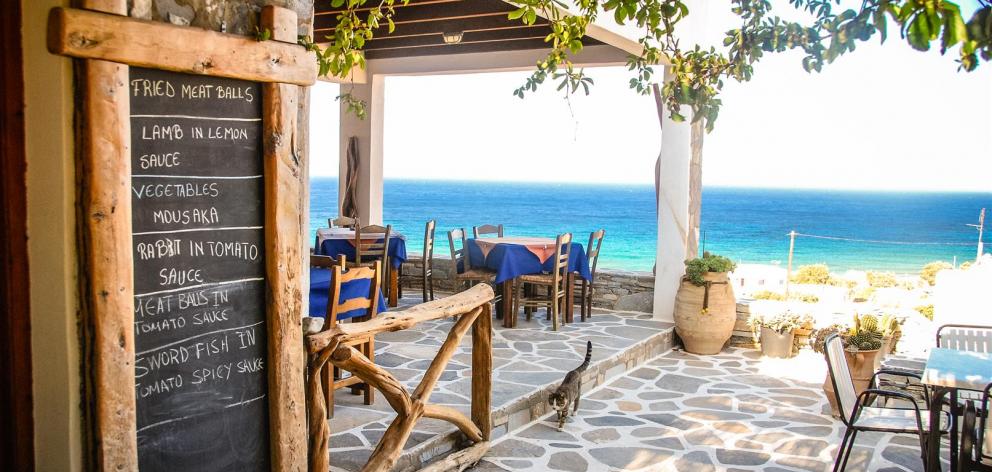
Over the past 15 years Athenian entrepreneur Angelos Michalopoulos and his wife Vasso have bought more than a quarter of the island, preserving much of the land and investing millions in low-density developments.
Ios is the couple’s passion project and they have publicly pledged to build on no more than 1% of the land they own.
"I do not want this to be an ex-beautiful island," Angelos says, but the project still has to pay its way, "or my children might decide to do it differently."
His company has now built several venues, including a couple of stylish beach bars and two highly individual hotels: the boutique Agalia and recently opened five-star Calilo.
The new resort sits on its own beach in 400 hectares of almost untouched Michalopoulos land. Constructed from local stone and shaded by centuries-old olive trees rescued from destruction on the mainland, Calilo is custom-made to Angelos' designs. It’s a mix of high-end, hippie and hipster. Repurposed soldiers' boots in psychedelic colours decorate the lobby, while mosaics of thousands of pieces of hand-cut stone coat the walls. The large, curvaceous swimming pool leads to the beach, while most of the 30 suites have a private plunge pool and their own cascading "waterfall".

We make one visit to the broad, bar-backed party beach of Mylopotas (great out of season), but we prefer our downtime free of vodka-fuelled festivities and there are plenty of other places to choose from. Of the island’s 36 beaches only five are commercialised. Even at Magganari, the large picturesque double beach in the south of the island, with sunbeds and thatched umbrellas, we find few people.
After an excellent alfresco dinner at Venus Taverna, we wind our way back along hill roads, past nothing but nature and the occasional white beacon of a little church.
Up a steep but well-paved path, at Palaiokastro, we discover a slightly larger blue-and-white church and the ruins of a 14th-century Venetian castle built on the tip of a high rocky outcrop. Quite alone, we survey the undulating coast, azure Aegean and speckled whale-backs of surrounding islands. There are plenty of longer, unpaved walks too (take a look at iospaths.gr), some ending close to secluded beaches perfect for an end-of-walk dip.
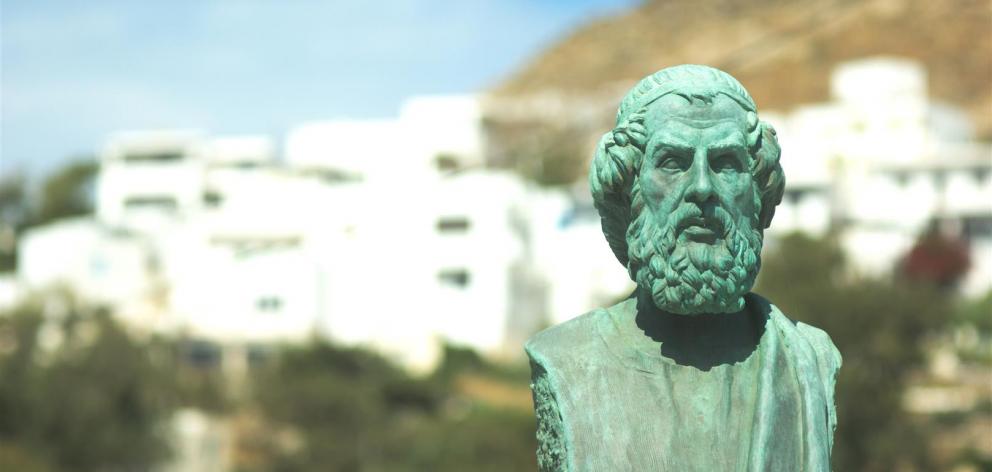
We discover finds from the site — giant pithoi, schist chests, seals for labelling produce — in the little museum in Chora. Ranged across a hillside, edged with stocky white windmills and topped by a trio of tiny churches, Chora is by day a typical village of narrow whitewashed alleys, children playing and the occasional black-clad grandmother occupying a front step.
We climb to the top chapel, Panagia Gremiotissa, the centre of the island’s most important traditional festival on August 15, enjoying more spectacular 360-degree views, before descending for dinner at Katogi. This lively little Greek restaurant serves creative cocktails and local food with a contemporary twist, including exquisite pear-and-cheese pasta parcels. On another night, we sip resiny retsina and Alfa beers at friendly, family-run Polydoros Taverna, which becomes our local for delicious home-cooked island food, including piquant ray fish and Greek salad made with Ios’ own ricotta-like cheese.
"There's room for us all on this island," says Angelos: from lap-of-luxury to £35 ($NZ70) a night, teens to several-times-20-somethings, foodie fusion to traditional tavernas. Since much of the future of Ios lies in his hands, we have to hope that he’s right.
- Juliet Rix was the guest of LuxurIos and the Greek National Tourist Office.
If you go
- The Agalia Hotel reopens in mid-May 2020, double suites from £129 ($NZ260) B&B, including port transfers.
- Calilo reopens on June 1 2020, doubles from £300 ($NZ600).
- Ferries sail to Ios year-round from Athens (7 to 8 hours) and Santorini (one hour). For car hire, try family firm Road Runner.
- More information, ios.gr



